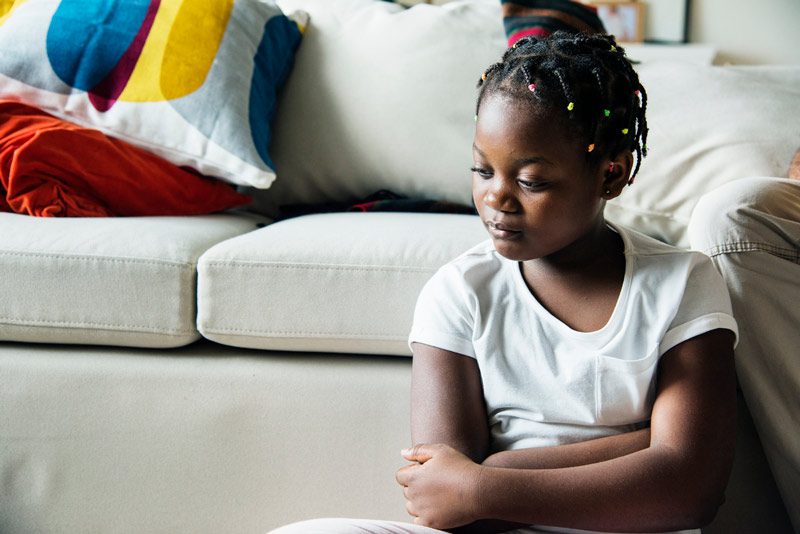Mental health problems are more common than meets the eye, especially for children. It’s thought that about 15% of children and adolescents worldwide have a mental health disorder.
Child psychologists and psychotherapists play an essential role in the treatment of mental health problems. They help children cope with stresses in their lives, assess mental health and developmental disorders, and act as guides and role models to their young patients. Their jobs are essential to bringing up happy, healthy children in society.
Continue reading to learn more about how these professionals help children with mental health problems.
Common Child Mental Health Issues
According to the Centers for Disease Control, the most commonly diagnosed mental health problems in children are attention-deficit/hyperactivity disorder (ADHD), behavioral issues, anxiety, and depression.
Other mental health problems in children include:
- Obsessive-compulsive disorder (OCD)
- Panic disorders
- Phobic disorders
- Post-traumatic stress disorder (PTSD)
- Separation anxiety disorder
- Social anxiety disorder
- Selective mutism
- Bipolar disorder
- Conduct disorder
- Oppositional defiant disorder (ODD)
- Tourette syndrome
- Eating disorders
Psychologists help children overcome and cope with these problems through different types of therapy.
What is Therapy?
Therapy, also called psychotherapy or counseling, is the most common way for children to receive help for a mental health problem. During therapy, the professional will determine and treat problem-causing behaviors, beliefs, emotions, relationship issues, and somatic responses (sensations felt in the body).
Starting therapy can be a significant step forward for children struggling with mental health challenges. Through treatment, they can change unhealthy practices and tendencies, resolve complex feelings, develop their connections to others, gain confidence, and improve self-esteem.
How Does it Work?
Effective therapy depends on achieving the right mix of three interrelated variables:
- Evidence-based treatment that is matched to the specific problem
- The professional’s clinical expertise
- The young patient’s unique situation, attributes, preferences, and culture
When young people start psychotherapy, they frequently feel that their problems will never end.
Psychotherapy assists individuals of all ages in understanding that they can effectively change their situation. This insight can enable children and adolescents to change their behavior, communicate their feelings better, develop connections with others, and improve their performance at school or work.
While certain problems and issues respond best to specific therapy styles, the one thing they have in common is the restorative nature of the relationship and rapport with the therapist.
Common Types of Therapy Used by Therapists
Different child therapy treatments are available using various approaches, practices, and techniques. In the section below, we will explore some of the most common ones.
Psychodynamic Therapy
Psychodynamic treatment helps patients understand their mental and emotional processes. It is rooted in traditional psychoanalysis, which assumes that mental health symptoms and unhealthy behaviors come from the unconscious mind.
Psychodynamic therapy is a talking therapy that helps individuals gain insight into their lives and present-day problems by exploring their emotions, thoughts, early-life experiences, and beliefs. The principal goals of psychodynamic therapy are client self-awareness and understanding of the influence of the past on present behavior.
Behavioral Therapy
Behavioral therapy seeks to identify and change self-destructive or unhealthy behaviors. It is based on the assumption that all behaviors are learned and, therefore, can be altered. Treatment focuses on current problems and how to change them.
Cognitive Therapy
Cognitive therapy is primarily concerned with how the mind functions. It focuses on the role of thought processes in learning and behavior. The idea behind cognitive therapy is that how people process information influences their behavior choices.
A cognitive psychologist tries to get individuals to look at and address their maladaptive thinking patterns and practices to help them achieve their goals.
Humanistic Therapy
Humanistic therapy uses a holistic approach that focuses on free will, human potential, and self-discovery. It aims to help individuals develop a strong and healthy sense of self, explore their feelings, find meaning, and focus on their strengths.
Different Child Therapy Techniques
Child psychologists and therapists use different therapy techniques to resolve issues specific to each individual’s character, family, and conditions. Treatment strategies account for each child’s symptoms, age, home situation, and other variables.
The following section looks at a few child therapy techniques in greater detail.
Parent-Child Interaction Therapy
Parent-child interaction therapy (PCIT) assists parents and guardians in communicating with children and dealing with their behaviors. In PCIT, parents and guardians get in-the-moment coaching from a professional through an earphone. This is a technique for children with behavior problems that also helps develop the parent-child bond.
Child-Centered Play Therapy
Child-centered play treatment (CCPT) is a play-based intervention that uses the playroom as a place of refuge to assist kids with handling their feelings through images and play. The counseling relationship can promote healing and positive change, reduce unhealthy behaviors, and improve daily functioning.
CCPT therapy helps children explore issues using toys and the play environment, empowering them to take the lead in their own treatment.
Cognitive Behavioral Therapy
Cognitive-behavioral therapy (CBT) is usually a short-term treatment that focuses on teaching specific skills. It focuses on how a child’s or adolescent’s thoughts, emotions, and behaviors are interconnected and how they affect one another. CBT is especially effective in treating anxiety, depression, PTSD, behavior problems, and substance abuse in children and adolescents.
Dialectical Behavior Therapy
Dialectical behavior therapy (DBT) helps children and adolescents who struggle with heightened feelings and behaviors. It uses multiple modes of treatment, including individual therapy, emotional regulation skills training, mindfulness, direct work with parents, and off-hours coaching by phone to help children and their families.
Applied Behavior Analysis
Applied behavior analysis is a method of treatment intended for children on the autism spectrum. It centers around giving praise and rewarding positive behaviors to encourage their recurrence and limit the number of undesirable behaviors. It models appropriate behaviors in real-life settings and addresses issues of learning, self-care, and relating to others.
Group Therapy
In group therapy, one or more therapists lead group sessions with multiple young patients. Group therapy uses group dynamics and peer interactions to increase understanding of unhealthy behaviors and improve social skills.
Family Therapy
Family therapy is a type of counseling that helps family members improve communication and resolve conflicts. Family therapy sessions can teach parents and siblings, as well as young patients, skills to deepen family connections and deal with stressful situations.
If you or someone you know experiences mental health issues, it is important to seek help from a qualified professional. Our Resource Specialist can help you find expert mental health resources to recover in your community. Contact us now for more information on this free service to our users.
About the Author: Ethel Brown is a freelance writer, digital marketing communications pro, and digital strategist. Ethel is associated with various organizations as an external digital strategist.
Resources to Recover and Our Sponsor Laurel House Celebrate Black History Month
February is Black History Month, a time for celebrating the outstanding achievements of Blacks and African Americans and their central role in US history. It is also a time to recognize the struggles Black people have faced throughout the history of our nation and give tribute to the strength and resilience of generations of Black Americans who have risen above adversity.
Black History Month originated from an idea by Harvard-educated historian Carter G. Woodson, who wrote the Journal of Negro History in 1916 to herald the achievements of overlooked African Americans in US history and culture. In 1926 he led an effort by the Association for the Study of Afro-American Life and History (ASALH) to officially declare the second week of February as “Negro History Week.” These dates align with the birthdays of two crucial figures in Black American history: Abraham Lincoln (February 12, 1809), who signed the Emancipation Proclamation officially ending slavery in the United States, and the Black American abolitionist and author Frederick Douglass (February 14, 1818), an escaped slave who is widely considered the most influential civil and human rights advocate of the 19th century. In 1976, President Gerald Ford gave official governmental recognition to the observance by declaring February “Black History Month.”
Without the contributions of Blacks and African Americans to more than 500 years of US history, culture, entertainment and the arts, science, athletics, industry and the economy, public service, and the Armed Forces, we would not be the country we are today.
Image by www.rawpixel.com
The opinions and views expressed in any guest blog post do not necessarily reflect those of www.rtor.org or its sponsor, Laurel House, Inc. The author and www.rtor.org have no affiliations with any products or services mentioned in the article or linked to therein. Guest Authors may have affiliations to products mentioned or linked to in their author bios.
Recommended for You
- Why a Mental Health Retreat Can Transform Your Recovery Journey - December 11, 2025
- Laughter as Therapy: How Humor Supports Emotional Recovery - December 8, 2025
- When Teenage Stomach Pain Signals Anxiety: A Pediatric GI Doctor Explains - December 4, 2025





